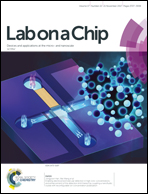Tumour-vessel-on-a-chip models for drug delivery
Abstract
Nanocarriers for drug delivery have great potential to revolutionize cancer treatment, due to their enhanced selectivity and efficacy. Despite this great promise, researchers have had limited success in the clinical translation of this approach. One of the main causes of these difficulties is that standard in vitro models, typically used to understand nanocarriers' behaviour and screen their efficiency, do not provide the complexity typically encountered in living systems. In contrast, in vivo models, despite being highly physiological, display serious bottlenecks which threaten the relevancy of the obtained data. Microfluidics and nanofabrication can dramatically contribute to solving this issue, providing 3D high-throughput models with improved resemblance to in vivo systems. In particular, microfluidic models of tumour blood vessels can be used to better elucidate how new nanocarriers behave in the microcirculation of healthy and cancerous tissues. Several key steps of the drug delivery process such as extravasation, immune response and endothelial targeting happen under flow in capillaries and can be accurately modelled using microfluidics. In this review, we will present how tumour-vessel-on-a-chip systems can be used to investigate targeted drug delivery and which key factors need to be considered for the rational design of these materials. Future applications of this approach and its role in driving forward the next generation of targeted drug delivery methods will be discussed.

- This article is part of the themed collections: Lab on a Chip Recent Review Articles and Organ-, body- and disease-on-a-chip systems


 Please wait while we load your content...
Please wait while we load your content...